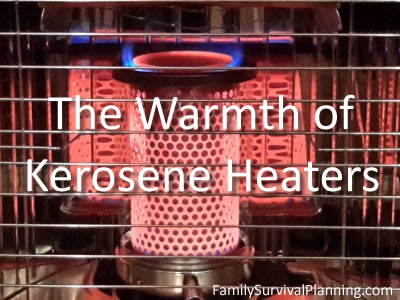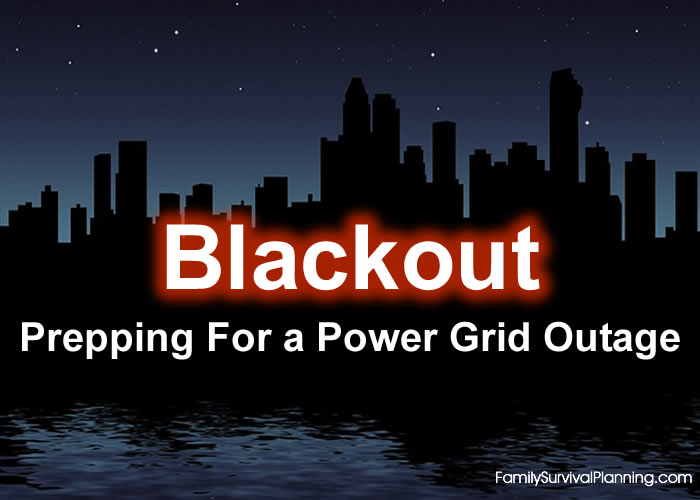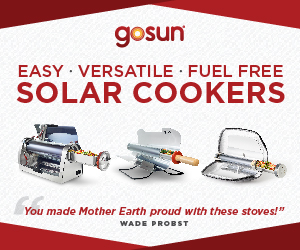- HOME
- Survival Gear
- Kerosene Heaters
Kerosene Heaters:
Dependable Way to Keep Warm When the Power is Out
On the Sunday morning I wrote this, it was 11 degrees at 8:00 a.m. At noon it was 25 degrees — likely to be the high for today. That's winter in Utah.
This season always reminds me of how dependent we are on most of the technology we take for granted and how vulnerable we are without it.
Having big-game hunted in the mountains of Utah and Colorado, and camped out in extremely harsh, cold weather, I know what it's like to be without externally generated warmth for days. It takes a serious toll on a person's energy and endurance.
Invest in emergency food storage now and enjoy peace of mind for the next 25 years. Don't miss out on the savings!
Our home is heated by a natural gas-fired, electrically-operated furnace. Without that furnace, it would become just as cold inside our home as it is outside. I don't think we could survive that condition for long, even with hot meals and staying bundled up in long underwear and winter clothing, at least not for weeks or months.
If any of our family were to get sick, being perpetually cold would probably be a death sentence; we would not have the physical energy to recover (depending on the illness, of course).
The converse is also true: Being chronically cold weakens the immune system to the point we would be much more likely to get sick. Once ill, how could a person recover? A person would be expending too much energy just trying to stay warm.
If we were to catch anything other than a cold, say pneumonia, bronchitis, influenza, a sinus infection, we would probably not survive the winter. I've had pneumonia several times and I cannot survive it without antibiotics. I sink like a rock, death in 3-5 days. Once sick, even with just a cold, a person can get so run down that they will succumb to other illnesses. It's a vicious, downward spiral.
So, in all of our preparations to survive a loss of any of the technologies we need to survive in the modern world, the subject of staying warm came up.
What alternatives do we have if there is no electricity?
I came up with this list of backup, heat producing alternatives to heat our home, along with pertinent assessments of the virtues of, and issues with, each:
- Coal - Requires a stove installation as a permanent fixture with a flue. Coal is a very dirty fuel, not combustion efficient. The stove is not portable.
- Fuel Oil - Requires a furnace installation as a permanent fixture with a flue. Requires electricity to operate. Furnace is not portable. Furnace is expensive.
- Diesel - Requires a stove installation as a permanent fixture with a flue. Combustion is only 81% efficient, at best. Stove is not portable. Stove is expensive.
- Gasoline - Requires a stove installation as a permanent fixture with a flue. Gasoline is a dangerously volatile fuel. Stove is expensive.
- Propane - Most propane heaters generate carbon monoxide and cannot be used safely indoors. I don't trust the propane heaters advertised as safe indoors. Propane is toxic; if it leaks, it can kill you. Propane is a dangerously volatile fuel. Using it to produce heat consumes fuel quickly.
- Butane - No stoves suitable for indoor heating, only cooking. Fuel is not available in bulk and is a dangerously volatile fuel. Butane is toxic; if it leaks, it can kill you.
- Kerosene - A low volatility fuel that contains a lot of energy. A very safe fuel, it is hard to ignite. Combustion efficiency is 99%. Available in bulk, one can safely store a lot of kerosene in a small space in one's home. Kerosene heaters are inexpensive, small, portable, can heat a room or an entire floor of a home. Both the heaters and the fuel are easily portable. They give off undesirable odors on startup and shutdown.
- Wood:Fireplaces - Wood logs require a lot of space and are not a dense source of energy. Cords of wood are required to heat an entire home for a winter. Much effort is required to keep fires burning and fireplaces clean. Fireplaces are notoriously inefficient, drawing much warm air out of a house.Wood pellet stoves - Combustion efficiency is about 100%. Requires installation as a permanent fixture with a flue. They require electricity to operate.
- Electricity - A very inefficient way to produce heat. Plus, what if is there is no electricity?
The process of elimination:
- I eliminated all heaters that require electricity to operate. What if there was a massive, extended, electrical power outage?
- I eliminated all furnaces. Too expensive. Require installations and permanent venting (flues).
- We were on a budget. I eliminated all heat sources and fuels that were expensive.
- I eliminated all fuels that are dangerously, explosively, volatile. The consequences of a mistake/accident are to dire.
- I eliminated all fuels that are toxic, that are dangerous to breathe, that can kill you.
- I eliminated all fuels that were inefficient, dirty, required a lot of space to store, were not efficiently portable, and that were not available in bulk at a reasonable price.
- I eliminated all heaters that were not portable. We needed small portable heaters that can be moved to different rooms in a home as needed.
I'm sure you see the obvious choice for us: Kerosene.
Before I write about kerosene heaters:
What is kerosene?
Kerosene was one of the first products derived from petroleum. Standard Oil, (owned by John D. Rockefeller), produced high quality kerosene, a light oil, for lamps.
Kerosene is a very dense, portable fuel, with a high flash point. This means it contains a lot of energy per ounce, but doesn't ignite easily, which makes it very safe to store inside your home. I can pour some kerosene into a small bowl and set a lit match in it. The kerosene will not ignite and will put the match out.
In 2015, the Chinese announced a new rocket to launch satellites, powered by kerosene and liquid oxygen. Imagine, a rocket engine powered by kerosene! That's how much energy kerosene contains.
Types of Kerosene Heaters
The first kerosene heater was invented in the 1800's. To this day, kerosene heaters are the primary source of heat in some parts of Japan.
There are two basic types of kerosene heaters: radiant and convection.

Heat Mate HMN-110 Radiant Kerosene Heater 10000 BTU 380 Sq. Ft.
Radiant heaters tend to be smaller, produce less heat, consume fuel less quickly, and act like small fireplaces. They give off heat by line-of-sight heat radiation, like the sun.

Kero World KW-24G 23,000-BTU Indoor Portable Convection Kerosene Heater
Convection heaters tend to be larger, produce more energy, consume fuel more quickly, and act like furnaces heating all the air in a room.
We purchased both types, one radiant and one convection, for different applications. We've been very satisfied with both.
We not only have them for emergencies, but use them as supplemental heat when we are having really cold weather. They heat up our large living area by almost 10 degrees, and our gas furnace doesn't come on for hours which saves us money.
The radiant heater is very much like a small, portable fireplace. We've always wanted a fireplace in our bedroom for the heat and the somewhat romantic atmosphere it can create. Now we have one. I will lift the lit heater from our office and place it on a chest of drawers facing the opposite side of our bedroom. It's safe (very little heat given off in any direction except directly in front of the heater) and easy to set up. It makes our bedroom seem very cozy on a winter evening.
There are some maintenance and safety procedures associated with any appliance that produces a flame. I'm not going to document those here, since they are well documented in the manuals that come with the kerosene heaters. If you decide to purchase a kerosene heater, I encourage you to read and follow the instructions. They are important.
I've been using kerosene heaters for over 30 years and I've had nothing but heat and satisfaction from them.
If you decide on a kerosene heater, here are some recommendations for selection based upon my experiences:
- Decide which type of heater, radiant or convection, will work best for your needs.
- When shopping, you will notice that many of the heaters either look similar or identical. This is because the technology is basically the same for all of them, and most are produced by the same manufacturer.
So, how to choose a brand and model?
All other things being roughly equal, I recommend that you do what I did:
- Shop by recommendations. You will find that some brands seem to have technology issues. Others have poor customer service. (based on recommendations from Amazon and other website reviews)
- Stick with heaters from a reputable manufacturer who has a history of providing good customer service.
I hope this short article will assist you in selecting an appropriate source of alternative, backup heat to keep you and your family warm, whatever may come.
Author Bio:
Lee Crain is my favorite person, best friend — and my husband. He sometimes writes articles for this site, which I appreciate, because he truly is a very knowledgeable person.


















